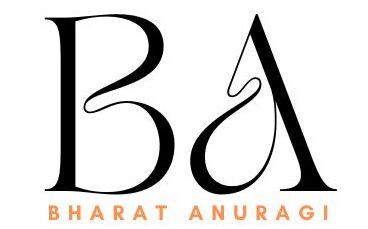3 Assertion(A): Social objective of management involve creation of benefits or economic
values to the society.
Reason(R): Now a days, profit maximisation is the only objective of management.
Alternatives:
A) Both Assertion(A) and Reason(R) are True and Reason (R)is the correct explanation of
Assertion(A).
B) Both Assertion(A) and Reason(R) are True, but Reason (R)is not the correct explanation
of Assertion(A).
C) Assertion(A) is True, but Reason(R) is False.
D) Assertion(A) is False, but Reason(R) is true.
4 Assertion(A): Management is an inexact science.
Reason(R): It is based on human behaviour. It is neither precise nor as comprehensive as the
pure science like physics or chemistry.
Alternatives:
A) Both Assertion(A) and Reason(R) are True and Reason (R)is the correct explanation of
Assertion(A).
B) Both Assertion(A) and Reason(R) are True, but Reason (R)is not the correct explanation
of Assertion(A).
C) Assertion(A) is True, but Reason(R) is False.
D) Assertion(A) is False, but Reason(R) is true.
5 Assertion(A): Management is considered as a tangible force.
Reason(R): Management cannot be seen and touched but its presence can be felt.
Alternatives:
A) Both Assertion(A) and Reason(R) are True and Reason (R)is the correct explanation of
Assertion(A).
B) Both Assertion(A) and Reason(R) are True, but Reason ( R)is not the correct explanation
of Assertion(A).
C) Assertion(A) is True, but Reason(R) is False.
D) Assertion(A) is False, but Reason(R) is true.
6 Assertion(A): Management translates the work in terms of goals to be achieved and assigns
the means to achieve it.
Reason(R): All organisations exist for the performance of some work.
Alternatives:
A) Both Assertion(A) and Reason(R) are True and Reason (R)is the correct explanation of
Assertion(A).
B) Both Assertion(A) and Reason(R) are True, but Reason ( R)is not the correct explanation
of Assertion(A).
C) Assertion(A) is True, but Reason(R) is False.
D) Assertion(A) is False, but Reason(R) is true.
7 Assertion(A): Satisfaction of personnel objectives is very important in an organisation.
Reason(R): Employees are one of the most valuable resources for an organisation,
Alternatives:
A) Both Assertion(A) and Reason(R) are True and Reason (R)is the correct explanation of
Assertion(A).
B) Both Assertion(A) and Reason(R) are True, but Reason (R)is not the correct explanation
of Assertion(A).
C) Assertion(A) is True, but Reason(R) is False.
D) Assertion(A) is False, but Reason(R) is true.
TS Grewal Class 12th Part 2 Accounts Book PDF download
8 Assertion(A): Management is termed as a group activity.
Reason(R): Every member of a firm joins the organisation with a different purpose and work
towards achievement of personal goals and not organisational goals.
Alternatives:
A) Both Assertion(A) and Reason(R) are True and Reason (R)is the correct explanation of
Assertion(A).
B) Both Assertion(A) and Reason(R) are True, but Reason (R)is not the correct explanation
of Assertion(A).
C) Assertion(A) is True, but Reason(R) is False.
D) Assertion(A) is False, but Reason(R) is true.
9 Assertion(A): Art is the skillful and personal application of existing knowledge to achieve
desired results.
Reason(R): If an organisation has good management team which is efficient and effective, it
automatically serves society by providing good quality products at reasonable prices.
Alternatives:
A) Both Assertion(A) and Reason(R) are True and Reason (R)is the correct explanation of
Assertion(A).
B) Both Assertion(A) and Reason(R) are True, but Reason (R)is not the correct explanation
of Assertion(A).
C) Assertion(A) is True, but Reason(R) is False.
D) Assertion(A) is False, but Reason(R) is true.
10 Assertion(A): In order to enter into a profession, one has to acquire an educational degree by
clearing a specified examinations conducted by required institutes.
Reason(R): All professions are bound by a code of conduct that guides the behavior of its
members.
Alternatives:
A) Both Assertion(A) and Reason(R) are True and Reason (R)is the correct explanation of
Assertion(A).
B) Both Assertion(A) and Reason(R) are True, but Reason (R)is not the correct explanation
of Assertion(A).
C) Assertion(A) is True, but Reason(R) is False.
D) Assertion(A) is False, but Reason(R) is true.
11 Assertion(A): Management increases efficiency.
Reason(R): As a result of excellent managerial competence, business organisations can
reduce costs and increase productivity by making optimum use of available resources.
Alternatives:
A) Both Assertion(A) and Reason(R) are True and Reason ( R)is the correct explanation of
Assertion(A).
B) Both Assertion(A) and Reason(R) are True , but Reason ( R)is not the correct explanation
of Assertion(A).
C) Assertion(A) is True, but Reason(R) is False.
D) Assertion(A) is False, but Reason(R) is true.
12 Assertion(A): Management principles are developed through observation and repeated
experimentation.
Reason(R): Outcomes of management principles can be predicted accurately.
Alternatives:
A) Both Assertion(A) and Reason(R) are True and Reason (R)is the correct explanation of
Assertion(A).
B) Both Assertion(A) and Reason(R) are True, but Reason (R)is not the correct explanation
of Assertion(A).
C) Assertion(A) is True, but Reason(R) is False.
D) Assertion(A) is False, but Reason(R) is true.
13 Assertion(A): Management creates a dynamic organisation.
Reason(R): It is generally seen that individuals in an organisation readily accept changes and
face challenges.
Alternatives:
A) Both Assertion(A) and Reason(R) are True and Reason (R)is the correct explanation of
Assertion(A).
B) Both Assertion(A) and Reason(R) are True, but Reason ( R)is not the correct explanation
of Assertion(A).
C) Assertion(A) is True, but Reason(R) is False.
D) Assertion(A) is False, but Reason(R) is true.

